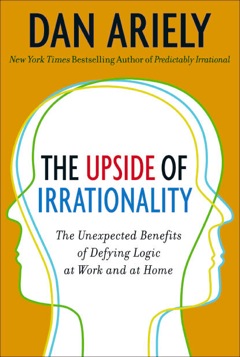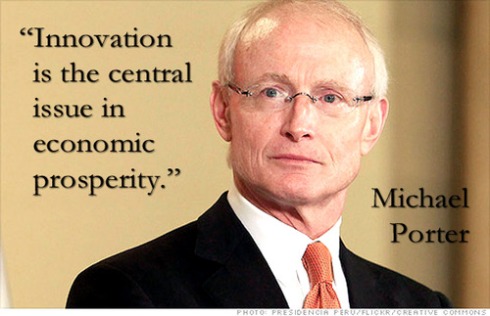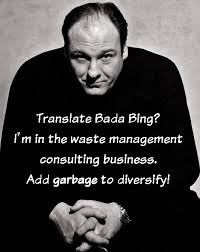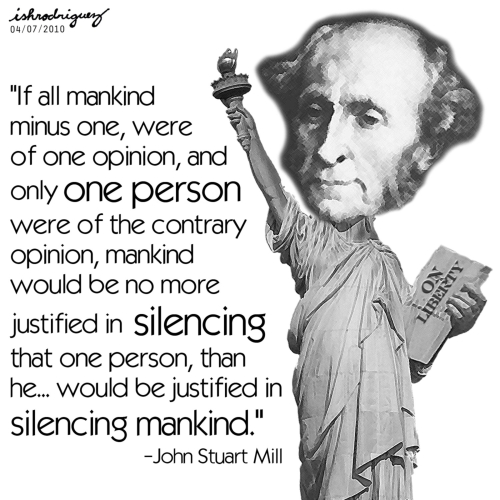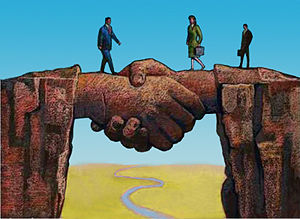As companies around the world transform themselves for competition that is based on information, their ability to exploit intangible assets has become far more decisive than their ability to invest in and manage physical assets. Several years ago, in recognition of this change, we introduced a concept we called the balanced scorecard. The balanced scorecard supplemented traditional financial measures with criteria that measured performance from three additional perspectives—those of customers, internal business processes, and learning and growth. (See the exhibit “Translating Vision and Strategy: Four Perspectives.”) It therefore enabled companies to track financial results while simultaneously monitoring progress in building the capabilities and acquiring the intangible assets they would need for future growth. The scorecard wasn’t a replacement for financial measures; it was their complement.

Recently, we have seen some companies move beyond our early vision for the scorecard to discover its value as the cornerstone of a new strategic management system. Used this way, the scorecard addresses a serious deficiency in traditional management systems: their inability to link a company’s long-term strategy with its short-term actions.
Most companies’ operational and management control systems are built around financial measures and targets, which bear little relation to the company’s progress in achieving long-term strategic objectives. Thus the emphasis most companies place on short-term financial measures leaves a gap between the development of a strategy and its implementation.
Managers using the balanced scorecard do not have to rely on short-term financial measures as the sole indicators of the company’s performance. The scorecard lets them introduce four new management processes that, separately and in combination, contribute to linking long-term strategic objectives with short-term actions.

The first new process—translating the vision—helps managers build a consensus around the organization’s vision and strategy. Despite the best intentions of those at the top, lofty statements about becoming “best in class,” “the number one supplier,” or an “empowered organization” don’t translate easily into operational terms that provide useful guides to action at the local level. For people to act on the words in vision and strategy statements, those statements must be expressed as an integrated set of objectives and measures, agreed upon by all senior executives, that describe the long-term drivers of success.
The second process—communicating and linking—lets managers communicate their strategy up and down the organization and link it to departmental and individual objectives. Traditionally, departments are evaluated by their financial performance, and individual incentives are tied to short-term financial goals. The scorecard gives managers a way of ensuring that all levels of the organization understand the long-term strategy and that both departmental and individual objectives are aligned with it.
The third process—business planning—enables companies to integrate their business and financial plans. Almost all organizations today are implementing a variety of change programs, each with its own champions, gurus, and consultants, and each competing for senior executives’ time, energy, and resources. Managers find it difficult to integrate those diverse initiatives to achieve their strategic goals—a situation that leads to frequent disappointments with the programs’ results. But when managers use the ambitious goals set for balanced scorecard measures as the basis for allocating resources and setting priorities, they can undertake and coordinate only those initiatives that move them toward their long-term strategic objectives.
The fourth process—feedback and learning—gives companies the capacity for what we call strategic learning. Existing feedback and review processes focus on whether the company, its departments, or its individual employees have met their budgeted financial goals. With the balanced scorecard at the center of its management systems, a company can monitor short-term results from the three additional perspectives—customers, internal business processes, and learning and growth—and evaluate strategy in the light of recent performance. The scorecard thus enables companies to modify strategies to reflect real-time learning.
None of the more than 100 organizations that we have studied or with which we have worked implemented their first balanced scorecard with the intention of developing a new strategic management system. But in each one, the senior executives discovered that the scorecard supplied a framework and thus a focus for many critical management processes: departmental and individual goal setting, business planning, capital allocations, strategic initiatives, and feedback and learning. Previously, those processes were uncoordinated and often directed at short-term operational goals. By building the scorecard, the senior executives started a process of change that has gone well beyond the original idea of simply broadening the company’s performance measures.
For example, one insurance company—let’s call it National Insurance—developed its first balanced scorecard to create a new vision for itself as an underwriting specialist. But once National started to use it, the scorecard allowed the CEO and the senior management team not only to introduce a new strategy for the organization but also to overhaul the company’s management system. The CEO subsequently told employees in a letter addressed to the whole organization that National would thenceforth use the balanced scorecard and the philosophy that it represented to manage the business.
National built its new strategic management system step-by-step over 30 months, with each step representing an incremental improvement. (See the exhibit “How One Company Built a Strategic Management System…”) The iterative sequence of actions enabled the company to reconsider each of the four new management processes two or three times before the system stabilized and became an established part of National’s overall management system. Thus the CEO was able to transform the company so that everyone could focus on achieving long-term strategic objectives—something that no purely financial framework could do.

Translating the Vision
The CEO of an engineering construction company, after working with his senior management team for several months to develop a mission statement, got a phone call from a project manager in the field. “I want you to know,” the distraught manager said, “that I believe in the mission statement. I want to act in accordance with the mission statement. I’m here with my customer. What am I supposed to do?”
The mission statement, like those of many other organizations, had declared an intention to “use high-quality employees to provide services that surpass customers’ needs.” But the project manager in the field with his employees and his customer did not know how to translate those words into the appropriate actions. The phone call convinced the CEO that a large gap existed between the mission statement and employees’ knowledge of how their day-to-day actions could contribute to realizing the company’s vision.
Metro Bank (not its real name), the result of a merger of two competitors, encountered a similar gap while building its balanced scorecard. The senior executive group thought it had reached agreement on the new organization’s overall strategy: “to provide superior service to targeted customers.” Research had revealed five basic market segments among existing and potential customers, each with different needs. While formulating the measures for the customer-perspective portion of their balanced scorecard, however, it became apparent that although the 25 senior executives agreed on the words of the strategy, each one had a different definition of superior service and a different image of the targeted customers.
The exercise of developing operational measures for the four perspectives on the bank’s scorecard forced the 25 executives to clarify the meaning of the strategy statement. Ultimately, they agreed to stimulate revenue growth through new products and services and also agreed on the three most desirable customer segments. They developed scorecard measures for the specific products and services that should be delivered to customers in the targeted segments as well as for the relationship the bank should build with customers in each segment. The scorecard also highlighted gaps in employees’ skills and in information systems that the bank would have to close in order to deliver the selected value propositions to the targeted customers. Thus, creating a balanced scorecard forced the bank’s senior managers to arrive at a consensus and then to translate their vision into terms that had meaning to the people who would realize the vision.
Communicating and Linking
“The top ten people in the business now understand the strategy better than ever before. It’s too bad,” a senior executive of a major oil company complained, “that we can’t put this in a bottle so that everyone could share it.” With the balanced scorecard, he can.
One company we have worked with deliberately involved three layers of management in the creation of its balanced scorecard. The senior executive group formulated the financial and customer objectives. It then mobilized the talent and information in the next two levels of managers by having them formulate the internal-business-process and learning-and-growth objectives that would drive the achievement of the financial and customer goals. For example, knowing the importance of satisfying customers’ expectations of on-time delivery, the broader group identified several internal business processes—such as order processing, scheduling, and fulfillment—in which the company had to excel. To do so, the company would have to retrain frontline employees and improve the information systems available to them. The group developed performance measures for those critical processes and for staff and systems capabilities.
Broad participation in creating a scorecard takes longer, but it offers several advantages: Information from a larger number of managers is incorporated into the internal objectives; the managers gain a better understanding of the company’s long-term strategic goals; and such broad participation builds a stronger commitment to achieving those goals. But getting managers to buy into the scorecard is only a first step in linking individual actions to corporate goals.
The balanced scorecard signals to everyone what the organization is trying to achieve for shareholders and customers alike. But to align employees’ individual performances with the overall strategy, scorecard users generally engage in three activities: communicating and educating, setting goals, and linking rewards to performance measures.
Communicating and educating.
Implementing a strategy begins with educating those who have to execute it. Whereas some organizations opt to hold their strategy close to the vest, most believe that they should disseminate it from top to bottom. A broad-based communication program shares with all employees the strategy and the critical objectives they have to meet if the strategy is to succeed. Onetime events such as the distribution of brochures or newsletters and the holding of “town meetings” might kick off the program. Some organizations post bulletin boards that illustrate and explain the balanced scorecard measures, then update them with monthly results. Others use groupware and electronic bulletin boards to distribute the scorecard to the desktops of all employees and to encourage dialogue about the measures. The same media allow employees to make suggestions for achieving or exceeding the targets.
The balanced scorecard, as the embodiment of business unit strategy, should also be communicated upward in the organization—to corporate headquarters and to the corporate board of directors. With the scorecard, business units can quantify and communicate their long-term strategies to senior executives using a comprehensive set of linked financial and nonfinancial measures. Such communication informs the executives and the board in specific terms that long-term strategies designed for competitive success are in place. The measures also provide the basis for feedback and accountability. Meeting short-term financial targets should not constitute satisfactory performance when other measures indicate that the long-term strategy is either not working or not being implemented well.
Should the balanced scorecard be communicated beyond the boardroom to external shareholders? We believe that as senior executives gain confidence in the ability of the scorecard measures to monitor strategic performance and predict future financial performance, they will find ways to inform outside investors about those measures without disclosing competitively sensitive information.
Skandia, an insurance and financial services company based in Sweden, issues a supplement to its annual report called “The Business Navigator”—“an instrument to help us navigate into the future and thereby stimulate renewal and development.” The supplement describes Skandia’s strategy and the strategic measures the company uses to communicate and evaluate the strategy. It also provides a report on the company’s performance along those measures during the year. The measures are customized for each operating unit and include, for example, market share, customer satisfaction and retention, employee competence, employee empowerment, and technology deployment.
Communicating the balanced scorecard promotes commitment and accountability to the business’s long-term strategy. As one executive at Metro Bank declared, “The balanced scorecard is both motivating and obligating.”
Setting goals.
Mere awareness of corporate goals, however, is not enough to change many people’s behavior. Somehow, the organization’s high-level strategic objectives and measures must be translated into objectives and measures for operating units and individuals.
The exploration group of a large oil company developed a technique to enable and encourage individuals to set goals for themselves that were consistent with the organization’s. It created a small, fold-up, personal scorecard that people could carry in their shirt pockets or wallets. (See the exhibit “The Personal Scorecard.”) The scorecard contains three levels of information. The first describes corporate objectives, measures, and targets. The second leaves room for translating corporate targets into targets for each business unit. For the third level, the company asks both individuals and teams to articulate which of their own objectives would be consistent with the business unit and corporate objectives, as well as what initiatives they would take to achieve their objectives. It also asks them to define up to five performance measures for their objectives and to set targets for each measure. The personal scorecard helps to communicate corporate and business unit objectives to the people and teams performing the work, enabling them to translate the objectives into meaningful tasks and targets for themselves. It also lets them keep that information close at hand—in their pockets.
Linking rewards to performance measures.
Should compensation systems be linked to balanced scorecard measures? Some companies, believing that tying financial compensation to performance is a powerful lever, have moved quickly to establish such a linkage. For example, an oil company that we’ll call Pioneer Petroleum uses its scorecard as the sole basis for computing incentive compensation. The company ties 60% of its executives’ bonuses to their achievement of ambitious targets for a weighted average of four financial indicators: return on capital, profitability, cash flow, and operating cost. It bases the remaining 40% on indicators of customer satisfaction, dealer satisfaction, employee satisfaction, and environmental responsibility (such as a percentage change in the level of emissions to water and air). Pioneer’s CEO says that linking compensation to the scorecard has helped to align the company with its strategy. “I know of no competitor,” he says, “who has this degree of alignment. It is producing results for us.”
As attractive and as powerful as such linkage is, it nonetheless carries risks. For instance, does the company have the right measures on the scorecard? Does it have valid and reliable data for the selected measures? Could unintended or unexpected consequences arise from the way the targets for the measures are achieved? Those are questions that companies should ask.
Furthermore, companies traditionally handle multiple objectives in a compensation formula by assigning weights to each objective and calculating incentive compensation by the extent to which each weighted objective was achieved. This practice permits substantial incentive compensation to be paid if the business unit overachieves on a few objectives even if it falls far short on others. A better approach would be to establish minimum threshold levels for a critical subset of the strategic measures. Individuals would earn no incentive compensation if performance in a given period fell short of any threshold. This requirement should motivate people to achieve a more balanced performance across short- and long-term objectives.
Some organizations, however, have reduced their emphasis on short-term, formula-based incentive systems as a result of introducing the balanced scorecard. They have discovered that dialogue among executives and managers about the scorecard—both the formulation of the measures and objectives and the explanation of actual versus targeted results—provides a better opportunity to observe managers’ performance and abilities. Increased knowledge of their managers’ abilities makes it easier for executives to set incentive rewards subjectively and to defend those subjective evaluations—a process that is less susceptible to the game playing and distortions associated with explicit, formula-based rules.
One company we have studied takes an intermediate position. It bases bonuses for business unit managers on two equally weighted criteria: their achievement of a financial objective—economic value added—over a three-year period and a subjective assessment of their performance on measures drawn from the customer, internal-business-process, and learning-and-growth perspectives of the balanced scorecard.
That the balanced scorecard has a role to play in the determination of incentive compensation is not in doubt. Precisely what that role should be will become clearer as more companies experiment with linking rewards to scorecard measures.
Business Planning
“Where the rubber meets the sky”: That’s how one senior executive describes his company’s long-range-planning process. He might have said the same of many other companies because their financially based management systems fail to link change programs and resource allocation to long-term strategic priorities.
The problem is that most organizations have separate procedures and organizational units for strategic planning and for resource allocation and budgeting. To formulate their strategic plans, senior executives go off-site annually and engage for several days in active discussions facilitated by senior planning and development managers or external consultants. The outcome of this exercise is a strategic plan articulating where the company expects (or hopes or prays) to be in three, five, and ten years. Typically, such plans then sit on executives’ bookshelves for the next 12 months.
Meanwhile, a separate resource-allocation and budgeting process run by the finance staff sets financial targets for revenues, expenses, profits, and investments for the next fiscal year. The budget it produces consists almost entirely of financial numbers that generally bear little relation to the targets in the strategic plan.
Which document do corporate managers discuss in their monthly and quarterly meetings during the following year? Usually only the budget, because the periodic reviews focus on a comparison of actual and budgeted results for every line item. When is the strategic plan next discussed? Probably during the next annual off-site meeting, when the senior managers draw up a new set of three-, five-, and ten-year plans.
The very exercise of creating a balanced scorecard forces companies to integrate their strategic planning and budgeting processes and therefore helps to ensure that their budgets support their strategies. Scorecard users select measures of progress from all four scorecard perspectives and set targets for each of them. Then they determine which actions will drive them toward their targets, identify the measures they will apply to those drivers from the four perspectives, and establish the short-term milestones that will mark their progress along the strategic paths they have selected. Building a scorecard thus enables a company to link its financial budgets with its strategic goals.
For example, one division of the Style Company (not its real name) committed to achieving a seemingly impossible goal articulated by the CEO: to double revenues in five years. The forecasts built into the organization’s existing strategic plan fell $1 billion short of this objective. The division’s managers, after considering various scenarios, agreed to specific increases in five different performance drivers: the number of new stores opened, the number of new customers attracted into new and existing stores, the percentage of shoppers in each store converted into actual purchasers, the portion of existing customers retained, and average sales per customer.
By helping to define the key drivers of revenue growth and by committing to targets for each of them, the division’s managers eventually grew comfortable with the CEO’s ambitious goal.
The process of building a balanced scorecard—clarifying the strategic objectives and then identifying the few critical drivers—also creates a framework for managing an organization’s various change programs. These initiatives—reengineering, employee empowerment, time-based management, and total quality management, among others—promise to deliver results but also compete with one another for scarce resources, including the scarcest resource of all: senior managers’ time and attention.
Shortly after the merger that created it, Metro Bank, for example, launched more than 70 different initiatives. The initiatives were intended to produce a more competitive and successful institution, but they were inadequately integrated into the overall strategy. After building their balanced scorecard, Metro Bank’s managers dropped many of those programs—such as a marketing effort directed at individuals with very high net worth—and consolidated others into initiatives that were better aligned with the company’s strategic objectives. For example, the managers replaced a program aimed at enhancing existing low-level selling skills with a major initiative aimed at retraining salespersons to become trusted financial advisers, capable of selling a broad range of newly introduced products to the three selected customer segments. The bank made both changes because the scorecard enabled it to gain a better understanding of the programs required to achieve its strategic objectives.
Once the strategy is defined and the drivers are identified, the scorecard influences managers to concentrate on improving or reengineering those processes most critical to the organization’s strategic success. That is how the scorecard most clearly links and aligns action with strategy.
The final step in linking strategy to actions is to establish specific short-term targets, or milestones, for the balanced scorecard measures. Milestones are tangible expressions of managers’ beliefs about when and to what degree their current programs will affect those measures.
In establishing milestones, managers are expanding the traditional budgeting process to incorporate strategic as well as financial goals. Detailed financial planning remains important, but financial goals taken by themselves ignore the three other balanced scorecard perspectives. In an integrated planning and budgeting process, executives continue to budget for short-term financial performance, but they also introduce short-term targets for measures in the customer, internal-business-process, and learning-and-growth perspectives. With those milestones established, managers can continually test both the theory underlying the strategy and the strategy’s implementation.
At the end of the business-planning process, managers should have set targets for the long-term objectives they would like to achieve in all four scorecard perspectives; they should have identified the strategic initiatives required and allocated the necessary resources to those initiatives; and they should have established milestones for the measures that mark progress toward achieving their strategic goals.
Feedback and Learning
“With the balanced scorecard,” a CEO of an engineering company told us, “I can continually test my strategy. It’s like performing real-time research.” That is exactly the capability that the scorecard should give senior managers: the ability to know at any point in its implementation whether the strategy they have formulated is, in fact, working, and if not, why.
The first three management processes—translating the vision, communicating and linking, and business planning—are vital for implementing strategy, but they are not sufficient in an unpredictable world. Together they form an important single-loop-learning process—single-loop in the sense that the objective remains constant, and any departure from the planned trajectory is seen as a defect to be remedied. This single-loop process does not require or even facilitate reexamination of either the strategy or the techniques used to implement it in light of current conditions.
Most companies today operate in a turbulent environment with complex strategies that, though valid when they were launched, may lose their validity as business conditions change. In this kind of environment, where new threats and opportunities arise constantly, companies must become capable of what Chris Argyris calls double-loop learning—learning that produces a change in people’s assumptions and theories about cause-and-effect relationships.
Budget reviews and other financially based management tools cannot engage senior executives in double-loop learning—first, because these tools address performance from only one perspective, and second, because they don’t involve strategic learning. Strategic learning consists of gathering feedback, testing the hypotheses on which strategy was based, and making the necessary adjustments.
The balanced scorecard supplies three elements that are essential to strategic learning. First, it articulates the company’s shared vision, defining in clear and operational terms the results that the company, as a team, is trying to achieve. The scorecard communicates a holistic model that links individual efforts and accomplishments to business unit objectives.
Second, the scorecard supplies the essential strategic feedback system. A business strategy can be viewed as a set of hypotheses about cause-and-effect relationships. A strategic feedback system should be able to test, validate, and modify the hypotheses embedded in a business unit’s strategy. By establishing short-term goals, or milestones, within the business-planning process, executives are forecasting the relationship between changes in performance drivers and the associated changes in one or more specified goals. For example, executives at Metro Bank estimated the amount of time it would take for improvements in training and in the availability of information systems before employees could sell multiple financial products effectively to existing and new customers. They also estimated how great the effect of that selling capability would be.
Another organization attempted to validate its hypothesized cause-and-effect relationships in the balanced scorecard by measuring the strength of the linkages among measures in the different perspectives. (See the exhibit “How One Company Linked Measures from the Four Perspectives.”) The company found significant correlations between employees’ morale, a measure in the learning-and-growth perspective, and customer satisfaction, an important customer perspective measure. Customer satisfaction, in turn, was correlated with faster payment of invoices—a relationship that led to a substantial reduction in accounts receivable and hence a higher return on capital employed. The company also found correlations between employees’ morale and the number of suggestions made by employees (two learning-and-growth measures) as well as between an increased number of suggestions and lower rework (an internal-business-process measure). Evidence of such strong correlations help to confirm the organization’s business strategy. If, however, the expected correlations are not found over time, it should be an indication to executives that the theory underlying the unit’s strategy may not be working as they had anticipated.

Especially in large organizations, accumulating sufficient data to document significant correlations and causation among balanced scorecard measures can take a long time—months or years. Over the short term, managers’ assessment of strategic impact may have to rest on subjective and qualitative judgments. Eventually, however, as more evidence accumulates, organizations may be able to provide more objectively grounded estimates of cause-and-effect relationships. But just getting managers to think systematically about the assumptions underlying their strategy is an improvement over the current practice of making decisions based on short-term operational results.
Third, the scorecard facilitates the strategy review that is essential to strategic learning. Traditionally, companies use the monthly or quarterly meetings between corporate and division executives to analyze the most recent period’s financial results. Discussions focus on past performance and on explanations of why financial objectives were not achieved. The balanced scorecard, with its specification of the causal relationships between performance drivers and objectives, allows corporate and business unit executives to use their periodic review sessions to evaluate the validity of the unit’s strategy and the quality of its execution. If the unit’s employees and managers have delivered on the performance drivers (retraining of employees, availability of information systems, and new financial products and services, for instance), then their failure to achieve the expected outcomes (higher sales to targeted customers, for example) signals that the theory underlying the strategy may not be valid. The disappointing sales figures are an early warning.
Managers should take such disconfirming evidence seriously and reconsider their shared conclusions about market conditions, customer value propositions, competitors’ behavior, and internal capabilities. The result of such a review may be a decision to reaffirm their belief in the current strategy but to adjust the quantitative relationship among the strategic measures on the balanced scorecard. But they also might conclude that the unit needs a different strategy (an example of double-loop learning) in light of new knowledge about market conditions and internal capabilities. In any case, the scorecard will have stimulated key executives to learn about the viability of their strategy. This capacity for enabling organizational learning at the executive level—strategic learning—is what distinguishes the balanced scorecard, making it invaluable for those who wish to create a strategic management system.
Toward a New Strategic Management System
Many companies adopted early balanced scorecard concepts to improve their performance measurement systems. They achieved tangible but narrow results. Adopting those concepts provided clarification, consensus, and focus on the desired improvements in performance. More recently, we have seen companies expand their use of the balanced scorecard, employing it as the foundation of an integrated and iterative strategic management system. Companies are using the scorecard to:
- clarify and update strategy;
- communicate strategy throughout the company;
- align unit and individual goals with the strategy;
- link strategic objectives to long-term targets and annual budgets;
- identify and align strategic initiatives; and
- conduct periodic performance reviews to learn about and improve strategy.
The balanced scorecard enables a company to align its management processes and focuses the entire organization on implementing long-term strategy. At National Insurance, the scorecard provided the CEO and his managers with a central framework around which they could redesign each piece of the company’s management system. And because of the cause-and-effect linkages inherent in the scorecard framework, changes in one component of the system reinforced earlier changes made elsewhere. Therefore, every change made over the 30-month period added to the momentum that kept the organization moving forward in the agreed-upon direction.
Without a balanced scorecard, most organizations are unable to achieve a similar consistency of vision and action as they attempt to change direction and introduce new strategies and processes. The balanced scorecard provides a framework for managing the implementation of strategy while also allowing the strategy itself to evolve in response to changes in the company’s competitive, market, and technological environments.
by Robert S. Kaplan and David P. Norton
